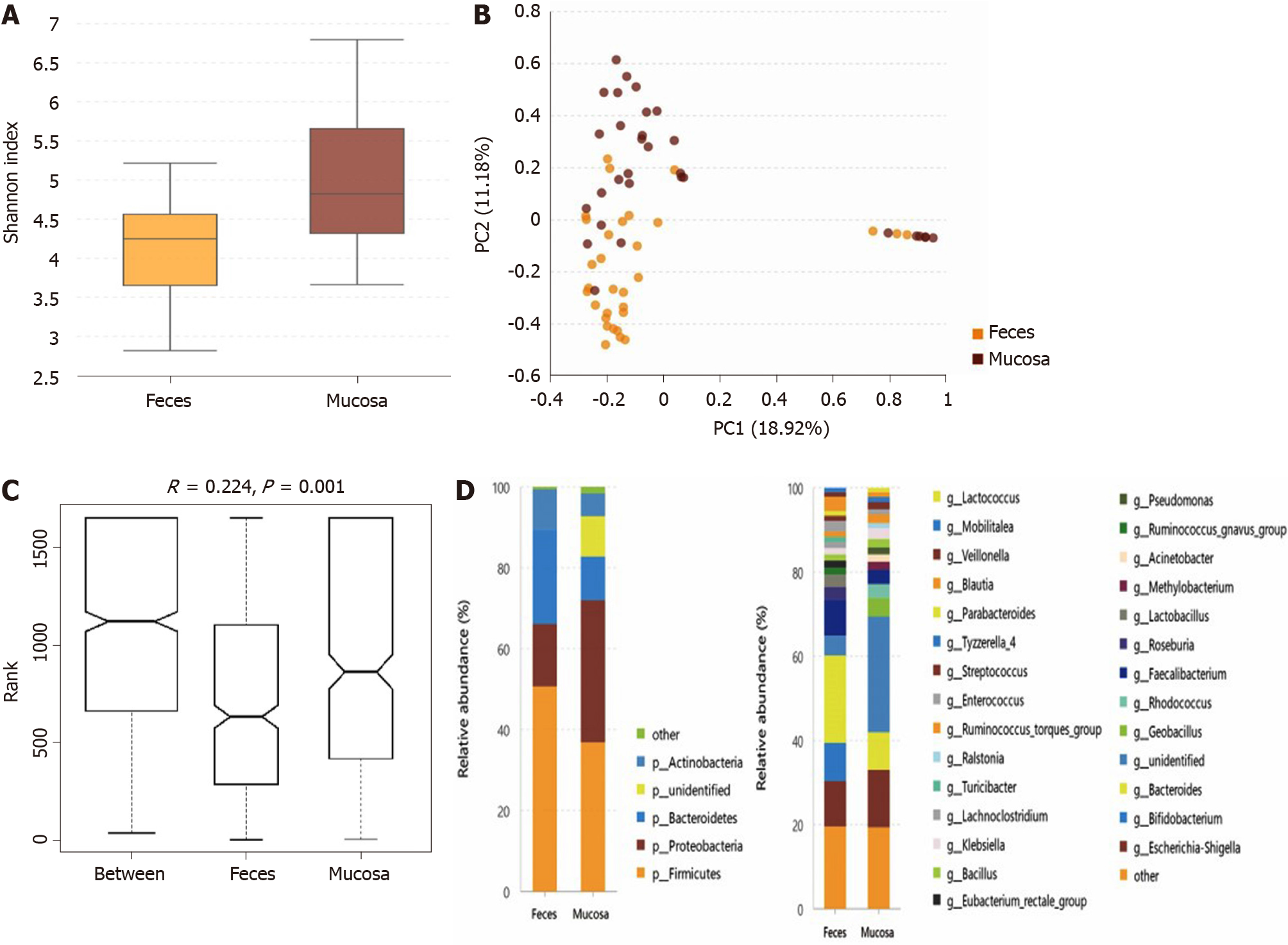Copyright
©The Author(s) 2021.
World J Gastroenterol. Jul 28, 2021; 27(28): 4722-4737
Published online Jul 28, 2021. doi: 10.3748/wjg.v27.i28.4722
Published online Jul 28, 2021. doi: 10.3748/wjg.v27.i28.4722
Figure 1 tatistical analysis of the sequencing results of the bacteria microbiota in stool and mucosa samples from patients with ulcerative colitis.
A: The α-diversity of microbiota evaluated by Shannon index. The ordinate shows the Shannon index, and the abscissa shows the sample types. Compared with mucosa samples (Shannon index, 5.04 ± 1.14), the α-diversity of microbiota in fecal samples (Shannon index, 4.08 ± 0.89) was significantly lower (P = 0.001); B: Principal component analysis. The flora structure of mucosa samples and that of stool samples showed an obvious difference (with a PC1 of 18.92% and a PC2 of 11.18%, as showed in the abscissa and ordinate axis separately); C: The analysis of similarities. The intergroup difference (marked as Between) was greater than within group differences (marked as Feces and Mucosa for the two groups) and the result was significant (P = 0.001); D: The relative abundance of the bacteria at the phylum (the left bar graph) and genus (the right bar graph) levels. The ordinate shows the relative abundance (%), and the abscissa axis shows the sample types where the microbiota was sequenced from. At the phylum level, the relative abundance of mucosal Proteobacteria and the unidentified phyla was higher than fecal ones, while the relative abundance of Bacteroidetes and Firmicutes was lower in the mucosa samples. At the genus level, 16 kinds of bacteria genera differed significantly between mucosa and stool samples.
- Citation: He XX, Li YH, Yan PG, Meng XC, Chen CY, Li KM, Li JN. Relationship between clinical features and intestinal microbiota in Chinese patients with ulcerative colitis. World J Gastroenterol 2021; 27(28): 4722-4737
- URL: https://www.wjgnet.com/1007-9327/full/v27/i28/4722.htm
- DOI: https://dx.doi.org/10.3748/wjg.v27.i28.4722









